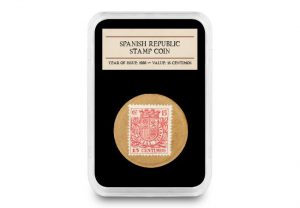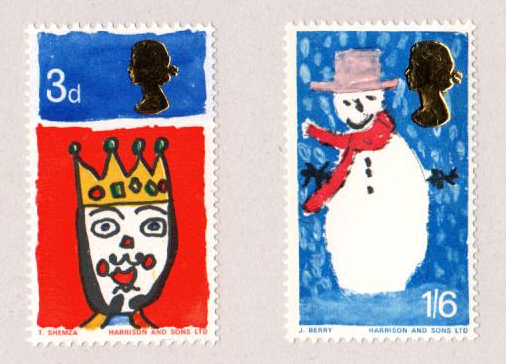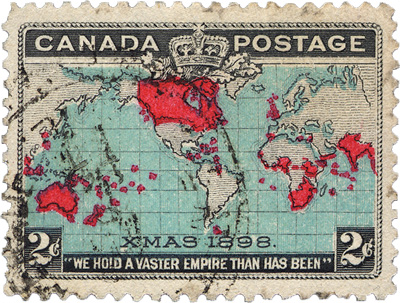Posts Tagged ‘Philatelic History’
Imagine using a cup, a stamp, or cardboard as a coin…
Today the coins you find in your change are all produced by the Royal Mint. It’s hard to imagine what life would be like if coins, and the metal to make them, disappeared.
When people have had to go to extreme lengths in the face of emergency, it has produced some of the most intriguing and interesting currencies around. And here are six of the most unusual currencies ever issued, and what drove people to create them.
The coins made from a drinking cup
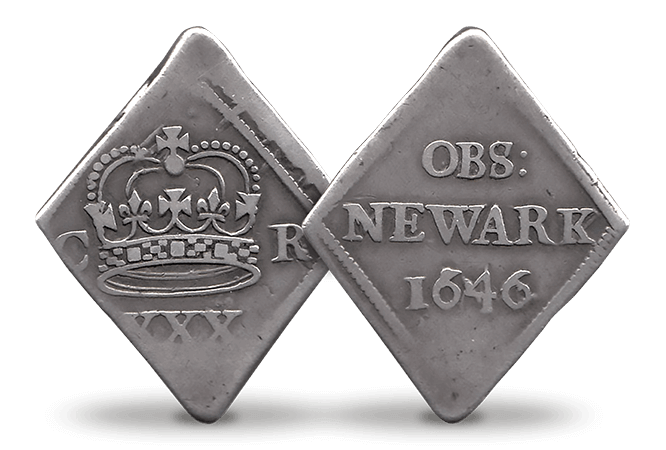
In 1646 in a town under siege, with no incoming money, the people of Newark needed to find a way to pay soldiers for protection. So they reached for whatever metal they had available to make coins – and that meant their cutlery! Silver cups and plates were surrendered, cut up into small diamond shaped pieces, and had a denomination stamped onto them.
Because of the way these coins were made, you could sometimes see the pattern of the cup or plate from which the coins were made. Understandably these coins, which surely belong in a museum, are hugely desirable among collectors and are rarely available.
The notes that were issued to be devalued
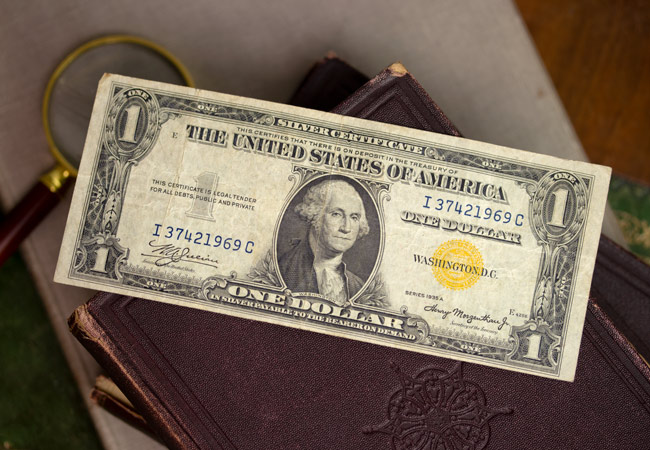
It seems odd that a government would issue money just for it to be devalued. But during WWII when the American army was based in North Africa this is exactly what happened. The American government was concerned that if the Germans were to mount a successful attack, they could take over the currency. Therefore, all notes used to pay soldiers based in North Africa had a yellow seal added to them. This meant that should the Germans take over, the notes could be easily identified by their yellow seal and instantly devalued.
The Russian stamps used as German propaganda
During WW1 the Russian government found it increasingly difficult to issue coins. Instead, they turned to ‘currency stamps’ printed on thin cardboard instead of normal stamp paper. Using stamps instead of coins was a way of saving precious metal for the war effort.
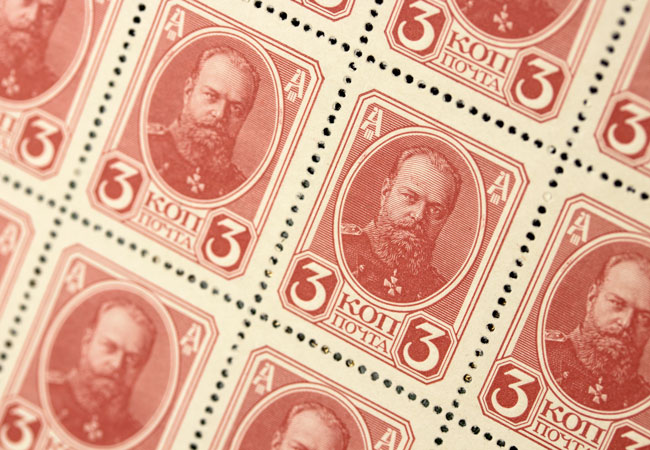
Several denominations of ‘currency’ were issued, with a statement on the reverse stating that each stamp had the circulating equivalent of Silver coins. However some of these stamps soon landed in the hands of Germans who counterfeited them but with one clever detail – the statement on the reverse was changed to an anti-Russian message. The idea was to destroy confidence in the Russian government and devalue the currency.
An unusual English denomination
George III’s reign is known for the vast number of interesting numismatic pieces issued, and the Bank of England emergency tokens are no different. Conflict in George III’s reign had caused financial panic, and thousands of people hoarded silver coins out of fear.
The Royal Mint’s limited ability to issue coins posed a problem as they could not make enough coins for the demand, so eyes turned to the Bank of England. An agreement was made that allowed the Bank to issue emergency currency. However technically speaking these were tokens and not coins, which is why they appear in the unusual denominations such as 1s 6d or 1 Dollar.
Why money was burnt in revolutionary France
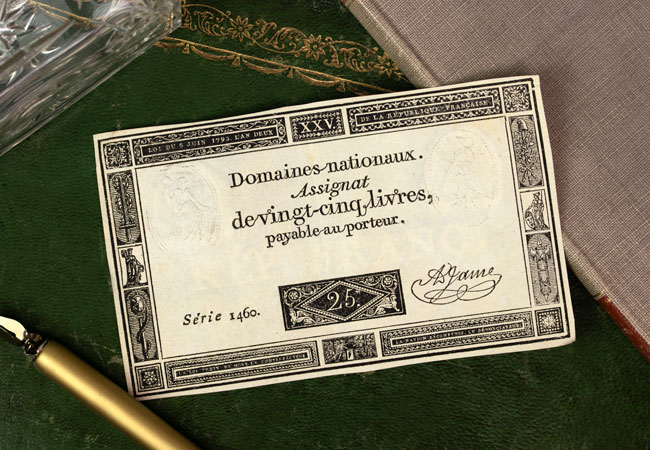
In revolutionary France in the early 1790s, the government issued paper money, known as Assignats, backed by the value of clergy property. The government continued to print money, and faced with an influx of counterfeits from Britain, the value of these Assignats soon reached a massive 45 Billion Livres, despite the value of clergy property only being 3 Billion Livres.
In 1796, the notes had lost all of their value and were publicly burned, to be replaced with a new paper money. Any of these surviving notes are incredibly rare as most of them were destroyed, making them very desirable among collectors.
How a Civil War turned a stamp into currency
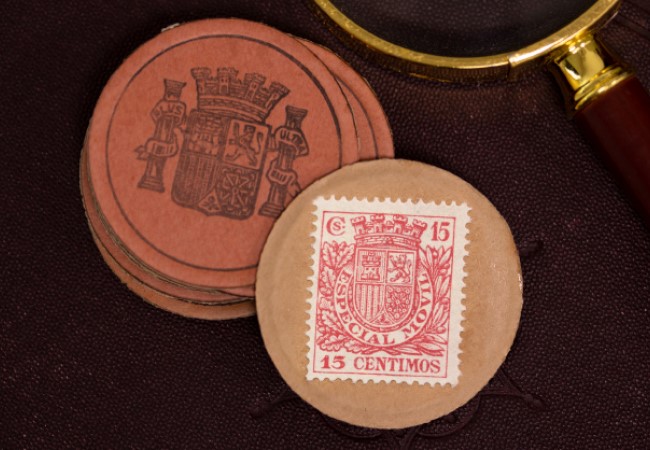
It’s hard to imagine a small paper stamp, issued over 80 years ago, being used to pay for goods and services. But in Spain in 1938 that’s exactly what happened.
The Civil War caused the public to hoard coins out of fear, and so they all but disappeared from circulation. Because metal was in limited supply, the government turned readily available stamps into ‘coins’. Unlike Russian emergency stamp currency, these stamps were welded onto a special board with the coat of arms printed onto the reverse. The stamp value gave these new ‘coins’ a denomination, and they were released into circulation to help towns and cities trade.
With such a delicate nature and small number, it’s no wonder that these coins are scarce and difficult to track down today.
Nowadays the Royal Mint is well suited to meeting our coin demands so it’s unlikely we’ll ever need to use stamps or cutlery in place of coins! Emergency currency is always a fascinating area for collectors, with some of the rarest and most unique issues having appeared out of difficult and troubled times. It’s not often that these emergency issues appear on the market – but it’s certainly worth keeping an eye out for them!
If you’re interested…
Today you can own one of these unusual and fascinating numismatic issues – a Spanish 15 Centimos ‘Coin’. There are only an extremely limited number of these issues available worldwide, and considering the fascinating story behind these issues, our stock is likely to be snapped up fast.
Who issued the world’s first Christmas Stamp?
Did you know that since Royal Mail issued their first Christmas stamp in 1966, over 17 billion Christmas stamps have been printed in Britain? But as popular as they are today, Great Britain was late to the table when it came to issuing Christmas stamps. So which country can lay claim to issuing the first Christmas stamp?
The Contenders…
Canada – 1898
The first country to lay claim is Canada, which produced a stamp bearing the words ‘Xmas 1898’. But many people question whether this was really a Christmas stamp at all…
Denmark – 1904
Denmark claims it printed the first Christmas stamp in 1904 after an idea from postmaster, Einar Holboell, to add an extra stamp to the Christmas mail and the money go to help sick children. However these “stamps” were actually labels and not issued for postage.
Austria – 1937
Austria issued two stamps on 12th December 1937 for use on Christmas mail and New Year greeting cards.
Hungary – 1943
Finally, there is Hungary. Many people think the 1943 Hungarian stamps to be the first real Christmas stamps as they feature religious imagery.
The secret behind the Canadian stamp
It is fair to say however that the issue of the Canadian Christmas stamp did not really have much to do with Christmas. In fact it was a result of then Canadian Postmaster General William Mulock lobbying to standardise postage rates across the Empire at one penny.
After failing to get the new rules introduced at the 1897 Universal Postal Union, Mulock returned the following year more determined than ever, with a new proposal. This time he succeeded, and in July 1898, the Imperial Penny Postage rate was unveiled. Canada made the move to be effective on Christmas day 1898.
As a result, the stamp was officially released on 7th December 1898 bearing Mercator’s famous map with the British Empire highlighted in red, and also the words “XMAS 1898”.
So who can lay claim to issuing the first Christmas stamp?
Well despite the controversy, to me, there is only one winner – and that is Canada. Whether it was issued specifically for Christmas or not, it bears the words ‘Xmas 1898‘ and therefore I think it rightly deserves the title of first Christmas stamp.
Rare stamp sets new world record at New York auction
It’s every stamp collector’s dream to find a stamp that turns out to be truly unique. That dream became reality in 1873 for L. Vernon Vaughn, a 12-year-old Scottish schoolboy living with his family in British Guiana.

The sole surviving British Guiana 1c magenta has regained its crown as the world’s most expensive stamp
Whilst rummaging through some family papers looking for stamps to add to his collection, he discovered, what would turn out to be, the sole surviving British Guiana One Cent Magenta.
The young philatelist added it to his collection. But unable to find any record of it in his stamp catalogue a few weeks later he decided to sell it to a local collector for six shillings.
Little did he know that 141 years later that that same stamp become the most expensive item by weight and size ever to be sold, selling for a world record $9.5m at Sotheby’s in New York earlier today.
The history of the stamp makes for interesting reading. The stamp itself only came about by chance. In 1856 storms had delayed the ships transporting the usual stamps from London from reaching the colony, as an emergency measure the colony issued their own definitive stamps to avoid running out of stamps completely!
It previously set the world record for a stamp back in 1922 when American collector Arthur Hind outbid the stamp-mad King George V and paid £7,343 for it. It was last owned by John Du Pont, heir to the DuPont chemical fortune, who paid almost $1m for it in 1980.
Although the stamp didn’t quite make the $20m that some experts forecast, it only took two minutes for this rarity to reclaim its crown as the world’s most expensive stamp. An anonymous bidder paid $9.5m – nearly four times the previous record for a stamp – the Swedish Treskilling Yellow.
Philatelic Legends like these are available to just a handful of collectors worldwide, however you may be interested to know that there are Philatelic Legends available that won’t cost you millions:

